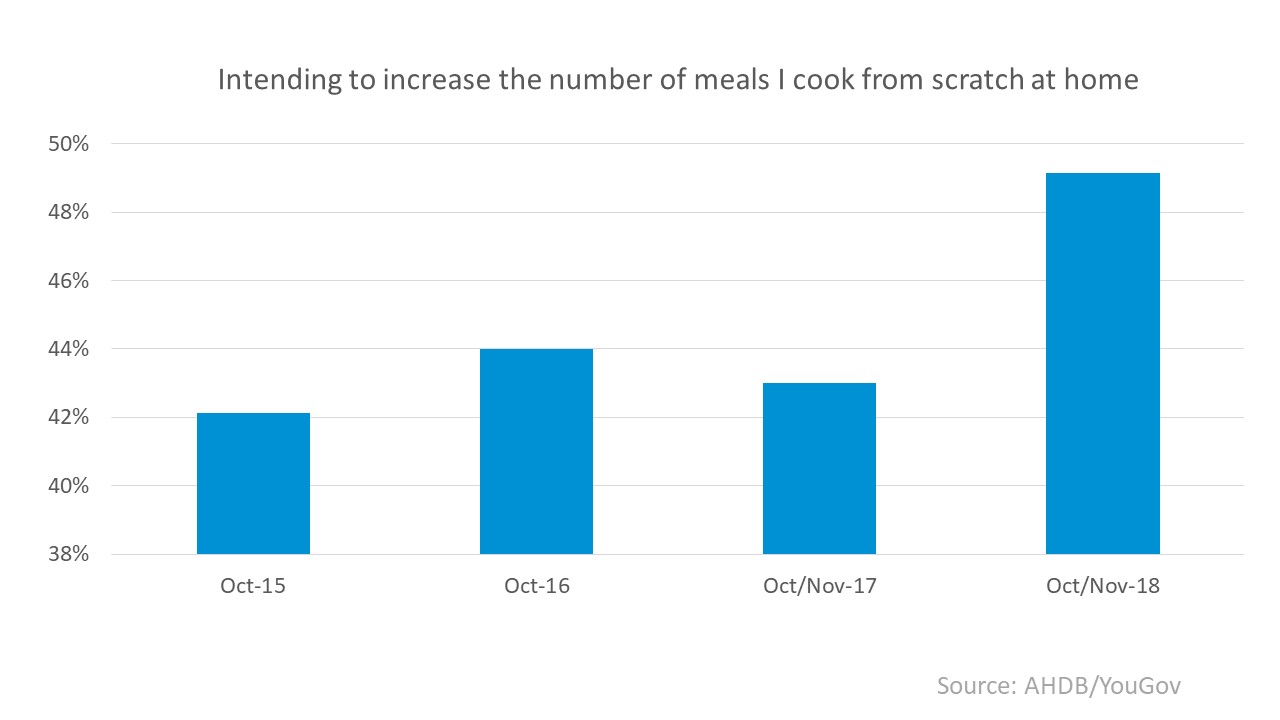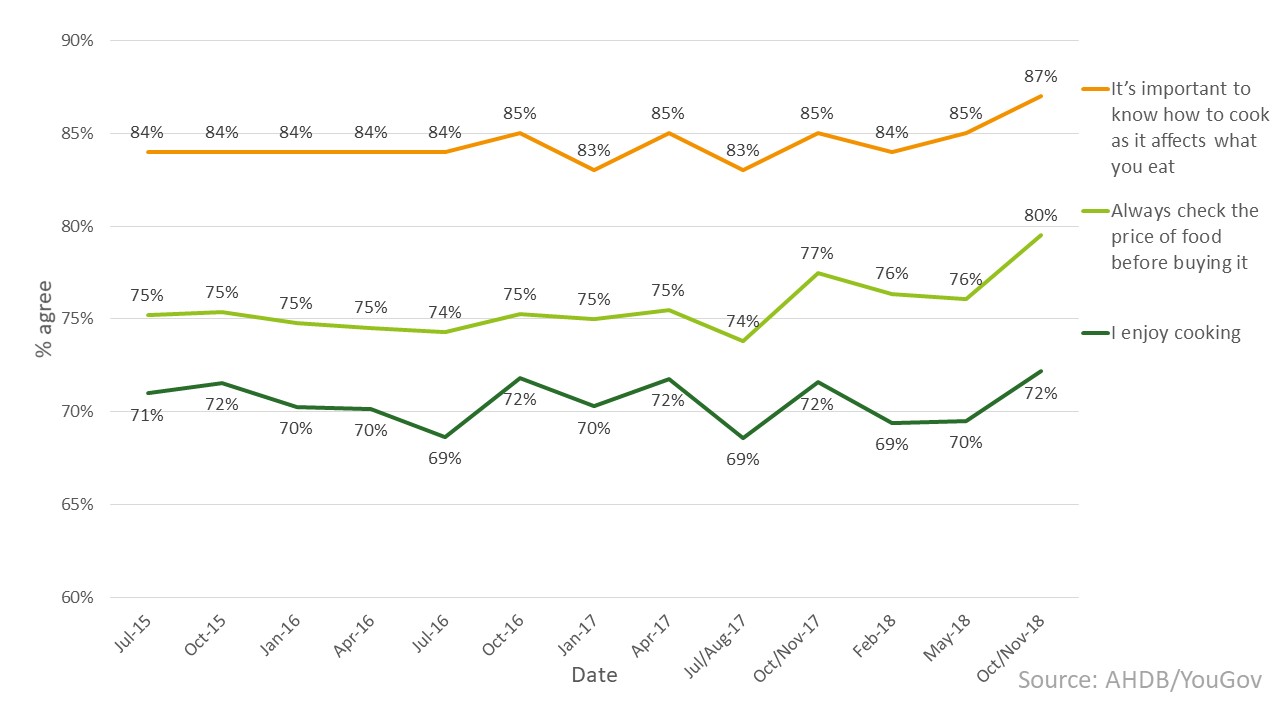Falling consumer confidence feeds scratch cooking increase
Wednesday, 6 March 2019
With consumers feeling the pinch of Brexit and higher inflation, they are cooking from scratch more to save money. Younger people are more open to cooking than in the past, and more interested in controlling what they eat for health. There are clear opportunities here for meat, fresh produce and dairy.
Those saying they intend to increase the number of meals they cook from scratch at home has jumped to almost half of consumers (AHDB/YouGov). Younger consumers are driving the increase in scratch cooking, with 58% of 25–34-year-olds saying they intend to cook more meals from scratch. There is also a difference among regions of the UK, with higher proportions in London (53%) and Scotland (52%). Previously, despite a desire to cook more, some consumers were deterred by barriers such as lack of time, knowledge and confidence in the kitchen. For more see our attitudes to cooking snapshot.

So what has changed and which underlying trends are causing this increase in scratch cooking?
Price
Price is the number one factor for shoppers buying meat and dairy (see AHDB meat shopper journey report) and, with increased economic uncertainty, consumers who check the price of products before buying them has risen to 80% (AHDB/YouGov). As the convenience offered by pre-prepared foods often comes with a large price tag, 26% of consumers said they would rely less on pre-prepared foods if money was tight (Kantar Worldpanel Plus | April 2018).
Eating for enjoyment
For many, cooking is a hobby. Most consumers said they enjoyed cooking and 58% like to experiment. Consumers who claim they would rather do other things than waste time cooking are at the lowest level since the start of AHDB’s consumer survey in 2015 (AHDB/YouGov).
Nearly 9 out of 10 consumers believe that knowing how to cook affects what you can eat (AHDB/YouGov). Cooking ability empowers consumers to eat foods they enjoy and adds variety to meals. Taste has always been the primary reason for food choice but even more so now – there has been a rise of 5% since 2014 of meals eaten due to taste (Kantar Worldpanel | Total food| 52 w/e 7 Dec 14 vs 52 w/e 2 Dec 18).
Channels such as YouTube and Instagram provide easy-to-follow tutorials and recipe inspiration, with consumers opting to follow a variety of social media ‘influencers’ depending on their interests. Bloggers such as Joe Wicks for those interested in fitness, or Deliciously Ella for plant-based, for example.
Health
The increase in scratch cooking could be influenced by consumers who want to eat less processed and more natural foods. More information is available to consumers relating to health, with many turning to diet and fitness apps to track calories, nutrition and more. Pre-processed foods can be viewed by consumers as unhealthy, as they can have high levels of salt and sugar. Cooking from scratch enables consumers to have greater control over what they eat.

What does this mean?
A level of political uncertainty and the slow growth of the economy have led to the decline in consumer confidence. If this trend continues, we could start to see ‘recessionary-type’ behaviour.
Some tactics consumers may take to save money:
- An increase in home-eaten meals and more people making packed lunches for work
- Less spend on pre-processed foods and opting for cheaper whole cuts of meat, or unprocessed vegetables and pulses
- Small, affordable treats such as snacking saw an increase after the financial crash in 2008
- Frozen foods or foods that can be frozen at home can help shoppers cut waste
- Shoppers trading down in proteins could put continued pressure on lamb and beef but may be an opportunity for pork
- Consumers trading down from brands to private label and towards discount stores
What AHDB is doing to tap into this trend?
AHDB aims to encourage consumers to cook more adventurously and nutritiously using beef, lamb, pork, potatoes, dairy and veg.
- The Pick Pork campaign has recently started another wave of advertising to influence shoppers to buy pork when doing their weekly shop. Showing cooking times and meal inspiration in the adverts using influencers such as Rebecca Adlington allows consumers to feel confident about cooking pork meals from scratch at home
- The Cheeky Beef and Love Lamb campaigns also show consumers how beef and lamb can be an easy meal within a variety of cuisines that anyone can cook at home
- Love Potatoes showcases a range of potato recipes in which potatoes are a core ingredient of the meal, rather than just an accompaniment
Topics:
Sectors:


